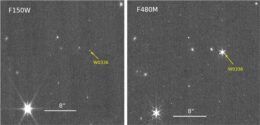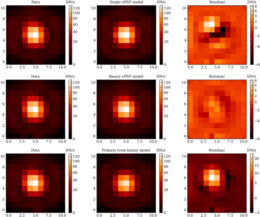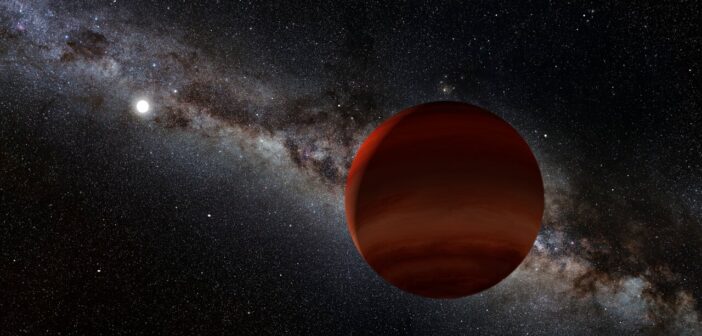Tough-to-find and mysterious once they’re spotted, brown dwarfs blur the clean distinction between stars and planets. Basic questions, such as how they form, remain unanswered. However, JWST’s suite of near-infrared detectors is perfectly suited to their study, and astronomers are now making the first of what will likely become a new wave of brown dwarf discoveries.
Uncategorized Objects
As much as astronomers (and many of their cousins in other scientific disciplines) love recording data and gathering observations, their true passion is to sort and label their specimens into neat little categories back in the lab. Most of the time, this is fairly straightforward: stars, those massive assemblages of scorchingly hot plasma, go over here, while planets, smaller chunks of cooler material, go over there. The spreadsheets can be sorted, and a sense of order rules.
But what happens when they find objects that fall awkwardly into the space between these seemingly clean camps? Such oddities aren’t hypothetical: in recent decades, astronomers and citizen scientists have discovered numerous “brown dwarfs,” or objects too big and warm to be a planet, but too small and cool to be a star. These curiosities defy neat classification, and how they form remains an open question. Do they collapse out of giant molecular clouds, which would make them the runts of a stellar litter, or do they condense from circumstellar disks, which would imply they’re actually gargantuan planets?

Cutouts of the JWST images of WISE J033605.05–014350.4 shown in different wavelength filters. The temperature of the brown dwarf is low compared to most stars, making it appear brighter in the image taken near a wavelength of 4 microns than the image taken closer to 1 micron. [Calissendorff et al. 2023]
JWST Weighs In
One way to help settle this question is to check if any known brown dwarfs have companions. If it turns out that brown dwarfs sometimes come in pairs, like stars, then both populations likely form in the same way. Motivated by this thought, a team led by Per Calissendorff (University of Michigan) used JWST’s groundbreaking near-infrared camera to survey 20 nearby brown dwarfs for companions that could have been missed by less sensitive instruments.
After null results for 11 of the 20 targets, the team turned their attention to a ~400 K brown dwarf succinctly named WISE J033605.05–014350.4. This time, the team noticed that the image of the object was somewhat lopsided: it could be better described by a pair of sources too close together to fully resolve than by a single object. Using models to reconstruct the images, the team concluded that they were looking at not one, but two brown dwarfs bound together on a ~7 year orbit, with each weighing in at less than 20 times the mass of Jupiter.

Reconstructions of the data using different models. The top row shows a single-source model and its residuals, while the middle rows show the authors’ binary model and its cleaner residuals. The last row shows the primary from the binary model subtracted from the data to emphasize the companion. [Calissendorff et al. 2023]
Citation
“JWST/NIRCam Discovery of the First Y+Y Brown Dwarf Binary: WISE J033605.05–014350.4,” Per Calissendorff et al 2023 ApJL 947 L30. doi:10.3847/2041-8213/acc86d

